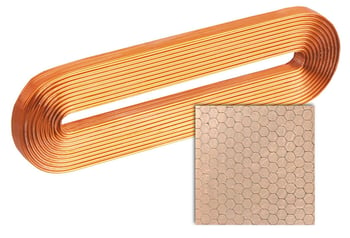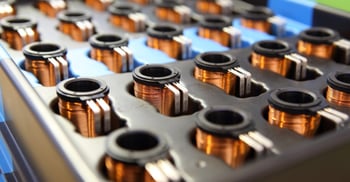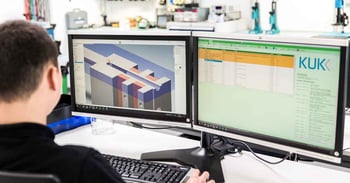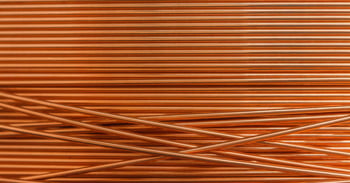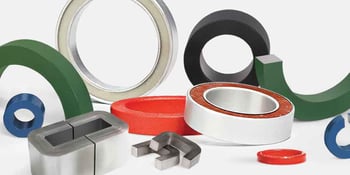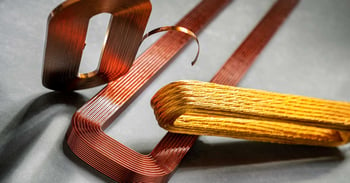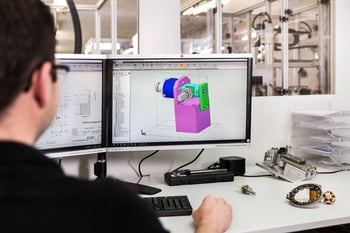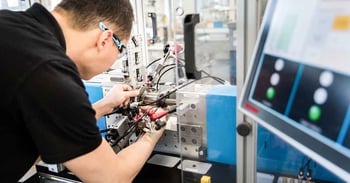Misconceptions about the fill factor of electric coils
In the realm of electric coils, there exists a common misconception among engineers regarding the fill factor. This misconception often leads to misunderstandings about the overall efficiency and performance of these coils. It is imperative to address these misconceptions and shed light on the true implications of the fill factor.
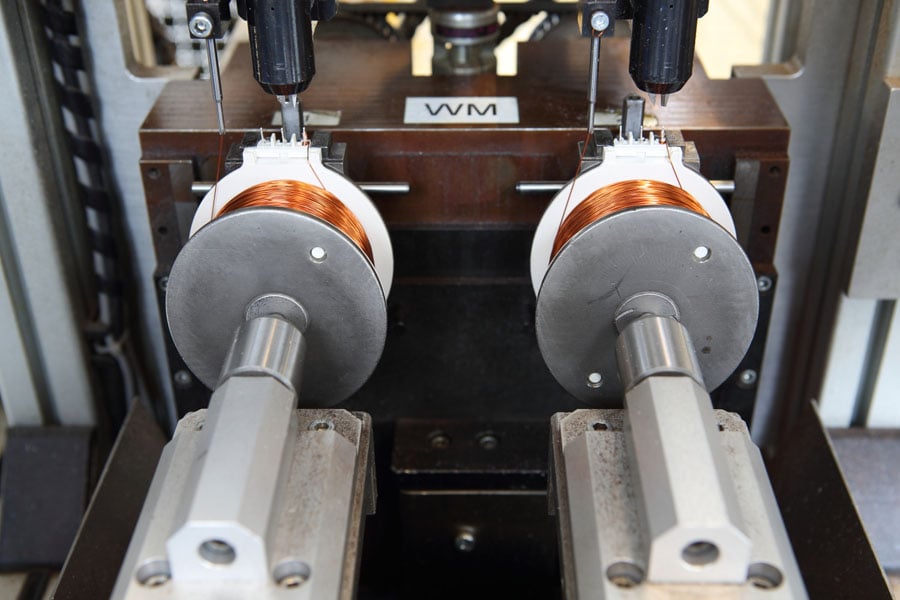
The fill factor, in simple terms, refers to the proportion of space within the coil that is occupied by the conducting material (copper or alternative). Certain definitions also include the insulation layer, which may seem to boost the fill factor, but in our perspective, this does not make sense. However, it is essential to understand that a higher fill factor does not necessarily guarantee better performance. This is misconception number one that engineers often fall victim to. While a high fill factor may seem desirable, there are trade-offs to consider. Other coil characteristics, such as inductance and resistance, can be affected by the fill factor - obviously also the production cost. In some instances, opting for a lower fill factor can prove to be advantageous, depending on the distinct demands of the application at hand.
Coil properties affected by the fill factor
Misconception number two is that the fill factor only affects the efficiency of the coil. In reality, the fill factor has a significant impact on various aspects of the coil, including its inductance, resistance, and even self-heating. Neglecting to consider the fill factor during the coil design process can result in suboptimal performance and potential issues in the long run.
To achieve a high fill factor, engineers must take into account several factors that influence it. One such factor is the wire diameter and insulation thickness. The size of the conductor and the thickness of the insulation can directly affect the fill factor. Striking a balance between conductor size and fill factor is crucial, as is ensuring proper insulation for optimal coil performance.
Another factor to consider is the coil winding technique employed. Different winding techniques can have varying impacts on the fill factor. Comparisons between hand-wound and machine-wound coils reveal differences in the achieved fill factor. Advanced winding methods have emerged as a means of maximizing the fill factor and improving overall coil performance.
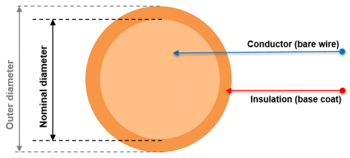
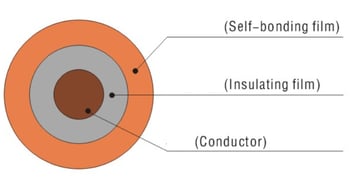
When specifying the fill factor, it is always important to check whether only the conductor (copper) has really been taken into account. Including the insulation layer, the value is of course higher (left, source: Elektrisola). With a self-bonding enamelled wire, the conductor has an even smaller proportion due to the additional bonding layer (right, source: Ronsen).
Why considering the fill factor is crucial in coil design
The importance of the fill factor in coil design cannot be overstated. It plays a vital role in determining the functionality of electric coils and should not be overlooked during the design process. Design considerations, such as space constraints, directly affect the fill factor. Techniques for maximizing the fill factor in compact designs are necessary to ensure optimal performance. Additionally, heat dissipation is a critical design consideration that must be balanced with the fill factor. Strategies for managing thermal issues while maintaining a high fill factor are essential for efficient coil design.
Manufacturers face the challenge of achieving the optimal fill factor during coil manufacturing. Precision winding machinery has emerged as a technique to achieve high fill factors consistently. Advancements in winding technology have paved the way for improved manufacturing processes. Quality control and inspection also play a crucial role in ensuring consistent fill factor. Measuring and verifying the fill factor are essential for maintaining quality and preventing variations that could impact coil performance.
What is a good fill factor in coil manufacturing?
Engineers must consider several factors and techniques to achieve the optimal fill factor in electric coil manufacturing. When speaking about common round wire, the average fill factor in coil manufacturing ranges from around 40% to 60%. However, it's important to note that this is just a broad range and can vary significantly depending on the specific coil and its intended purpose. Some coils may have a higher fill factor, nearing 70% or more, while others may have a lower fill factor, closer to 30%. The situation is different for edgewise wound coils made from flat wire, that are applied into motors for instance.
The determination of the optimal fill factor for a particular coil involves careful consideration of various factors. These factors include the desired electrical properties of the coil, the available space constraints, and the trade-offs between fill factor and other coil characteristics. It is crucial to strike a balance between achieving a high fill factor and ensuring proper heat dissipation, insulation, and overall coil performance.
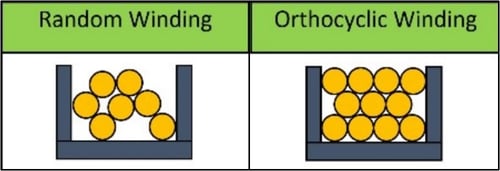 A wild or random winding is the common solution for an automated process and big scale production, but achieves a lower fill factor than by orthocyclic layer windings. Source: Research and Innovation Actions (RIA)
A wild or random winding is the common solution for an automated process and big scale production, but achieves a lower fill factor than by orthocyclic layer windings. Source: Research and Innovation Actions (RIA)
Achieving an optimal fill factor for electric coils
A high fill factor of over 60% is often desired in coil manufacturing as it enables efficient use of space within the coil and promotes optimal performance. Achieving such a high fill factor can be challenging, but one effective technique that has been found to consistently achieve it is through the use of orthocyclic winding, particularly when the number of turns is below approximately 500.
Orthocyclic winding is a specialized technique that involves carefully arranging the conducting wire in a way that maximizes the fill factor. By precisely positioning the wire in a specific pattern, the space within the coil can be effectively utilized, resulting in a higher fill factor. This technique is especially beneficial for coils with a lower number of turns, as it allows for tighter winding without compromising the overall performance.
While orthocyclic winding is a highly effective technique for achieving a high fill factor, it is important to note that it may not always be suitable for every coil design. Factors such as the number of turns, available space, and specific electrical requirements must be taken into consideration. In some cases, alternative winding methods or design modifications may be more appropriate to achieve the desired fill factor.
What are the limitations of orthocylic layer winding?
Orthocyclic layer winding presents numerous challenges due to the variations in the effective outer diameter of the wire (including both copper and insulation layer). These discrepancies become more pronounced as the number of turns increases, ultimately rendering layer winding impractical. To enable successful orthocyclic winding, the development of a machine equipped with camera monitoring and regulated wire feed is necessary. However, this setup significantly slows down the winding process, leading to increased costs. Additionally, factors such as tolerances, temperature differences, and varying wire outer diameters (from lot to lot) further complicate the process. As a result, the production of waste coils becomes more prevalent as the number of turns increases, making it less cost-effective.
From approximately 1000 turns, it becomes challenging to argue for orthocyclic windings.
Even if just one wire in a layer is imperfectly wound, it can disrupt the arrangement in subsequent layers, resulting in a disorderly winding pattern.
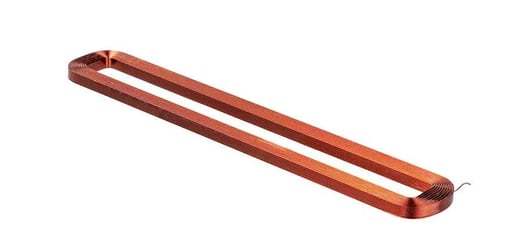 A perfectly wound orthocylic air coil with a fill factor of approx. 75%. Manufacturer: KUK Group
A perfectly wound orthocylic air coil with a fill factor of approx. 75%. Manufacturer: KUK Group
Quality control and inspection of a coil's fill factor
Various methods can be employed to measure and verify the fill factor of electric coils. One commonly used approach is the use of precision measurement tools such as calipers or micrometers. These tools allow for precise measurements of the coil dimensions, including the space occupied by the conducting wire. By comparing these measurements to the desired specifications, manufacturers can determine the fill factor and make necessary adjustments if deviations are detected.
Another method for measuring the fill factor is through the use of imaging techniques. Advanced imaging technology, such as high-resolution cameras or laser scanners, can capture detailed images of the coil and analyze the distribution of the conducting wire. Image processing algorithms can then be applied to calculate the fill factor based on the wire's coverage within the coil. This non-contact method offers a fast and accurate way to assess the fill factor, ensuring consistent performance.
By maintaining a consistent fill factor through effective quality control and inspection, manufacturers can ensure that their electric coils meet the desired performance specifications. This not only enhances the efficiency and reliability of the coils but also contributes to the overall success of the applications in which they are employed. With proper attention to quality control and inspection, manufacturers can confidently deliver electric coils that meet the highest standards of performance and reliability.
Outlook and summary about the fill factor in coil manufacturing
Looking towards the future, ongoing research and advancements in coil design and manufacturing techniques offer exciting opportunities for fill factor optimization. Innovations in materials and coatings hold promise for enhancing the fill factor and subsequently improving coil performance and reliability. Computational modeling and simulation also play a vital role in optimizing the fill factor. Virtual prototyping enables engineers to fine-tune coil designs and overcome challenges associated with current simulation techniques.
In conclusion, it is crucial to dispel misconceptions surrounding the fill factor of electric coils. Engineers must understand that a higher fill factor does not always translate to better performance. Considering the fill factor along with other coil characteristics is essential for optimizing efficiency and overall performance. By taking into account various factors and techniques, manufacturers can achieve the optimal fill factor during coil manufacturing. Ongoing advancements in coil design and manufacturing techniques offer exciting possibilities for further fill factor optimization. By embracing these advancements, engineers can maximize the potential of electric coils and unlock new possibilities in various applications.


